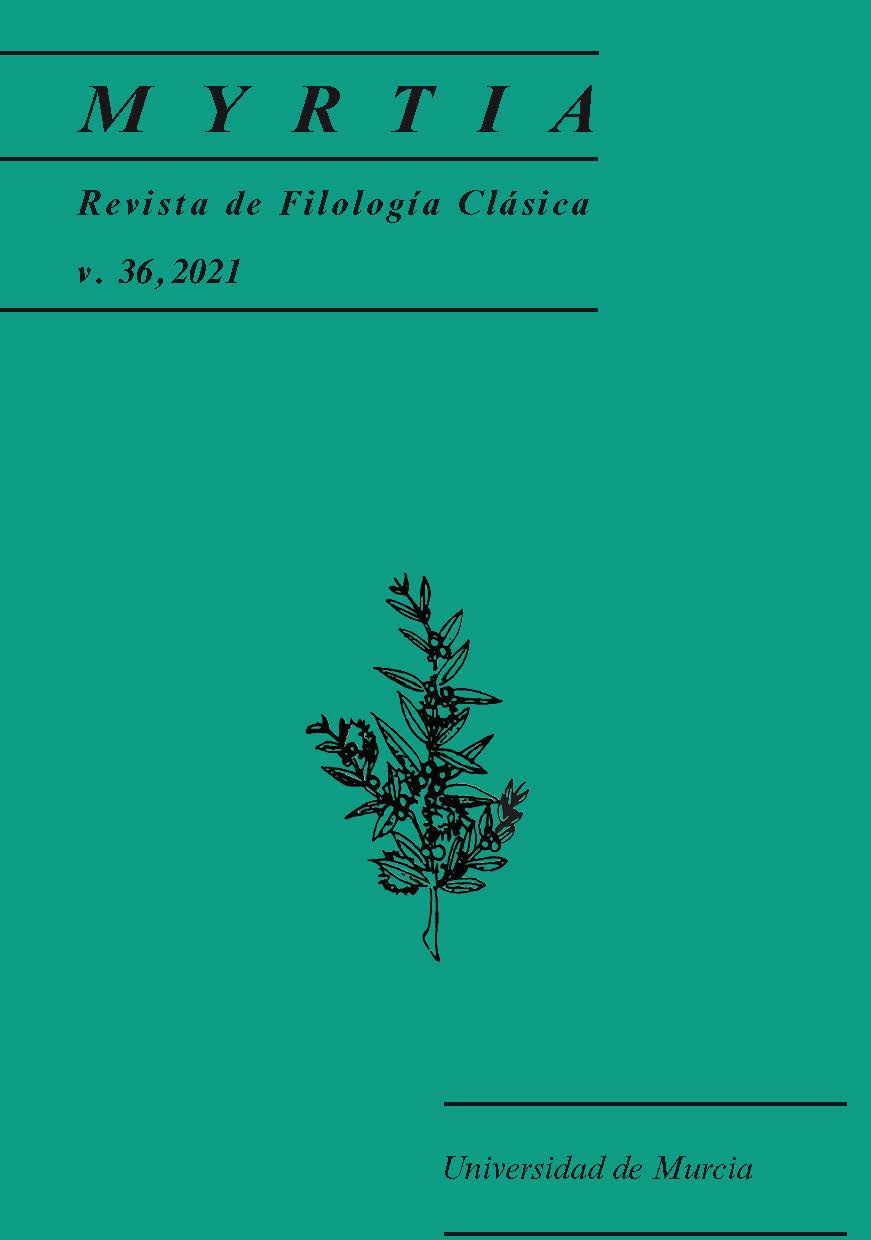The Trojan Myth of Memnon and the Singing Colossus: Variants of the Story in Philostratus
Abstract
The Trojan myth of the hero Memnon is reiterated with variants and reformulations in different works of the Philostratean corpus: Images, Life of Apollonius of Tyana and Heroicus. The inclusion of mythical narrative has been often considered as a repetitive resource inheriting school forms and the archaic and bookish taste of the pepaideumenoi. This article proposes a transversal analysis of alluding to Memnon in the corpus to demonstrate that the variations of the mythical story are functional rewritings of a Hellenic sophia according to the sophist's narrative program in each work.
Downloads
References
G. Anderson, 1986, Philostratus: Biography and Belles Lettres in the Third Century A.D., London.
A. Bernabé Pajares, 1992, Filóstrato, Vida de Apolonio de Tiana, Madrid.
N. Braginskaya, D. Leonov, 2006, “La composition des Images de Philostrate L’Ancien” en Le défi de l’art. Philostrate, Callistrate et l’image sophistique, M. Costantini, F. Graziani, S. Rolet (eds.), Rennes, pp. 9-29.
I. Chialva, 2015, “Los ríos de Homero: una mirada sofística de la paideia en las ImágenesFilóstrato”, Faventia 37, pp. 71-89.
V. Decloquement, 2019, Commenter, critiquer et réécrire Homère dans l’Heroikos de Philostrate, Thèse de doctorat inédite, Université de Lille.
S. Dubel, 1997, “Ekphrasis et enargeia: la description antique comme parcours”, en Dire l’évidence (Philosophie et rhétorique antiques), C. Lévy, L. Pernot (eds.), Paris, pp. 249-264.
J. Elsner, 2009, “A Protean corpus”, en Philostratus, E. Bowie, J. Elsner (eds.), Cambridge, pp.18.
S. Follet, 2017, Philostrate. Sur les héros, Paris.
S. Goldhill, 2009, “The Anecdote. Exploring the boundaries between oral and literate performance in the Second Sophistic”, en Ancient Literacies. The Culture of Reading in Greece, W.Johnson, H. N. Parker (eds.), Oxford, pp. 96-113.
R. Graves, 2007, Los mitos griegos II, Madrid.
R. D. Griffith, 1998, “The Origin of Memnon”, ClAnt 17.2, pp. 212-234.
P. Grimal, 1989, Diccionario de mitología griega y romana, Barcelona.
M. C. Herrero Ingelmo, 1994, Pausanias, Descripción de Grecia Libros I y II, Madrid.
C. L. Kayser, 1964, Flavii Philostrati. Opera. Auctiora edidit (ed. minor), Vol. Ι, Hildesheim. Leipzig.
C. L. Kayser, 1964, Flavii Philostrati. Opera. Auctiora edidit (ed. minor), Vol. II, Hildesheim.
G. A. Kennedy, 2003, Progymnasmata. Greek Textbooks of Prose Composition and Rhetoric, Atlanta.
J. Lauwers, 2012, “Readings books, talking culture”, en Orality, Literacy and Performance in the Ancient World, E. Minchin (ed.), Leiden, Boston, pp. 227-244.
A. Manieri, 1999, “Colori, suoni e profumi nelle Imagines: principi dell’ estetica filostratea”, QUCC 63.3, pp. 111-121.
F. Mestre, 1996, Filóstrato. Heroico, Gimnástico, Descripciones de cuadros, Madrid.
F. Mestre, 2007, “Filóstrato y los progymnásmata”, en Escuela y literatura en Grecia antigua, J.
A. Fernández Delgado, F. Pordomingo, A. Stramaglia (eds.), Cassino, pp. 523-556.
F. Mestre, 2020, “Unité et variété dans la polygraphie de Philostrate”, Synthèses & Hypothèses, 1, «Polygraphies antiques. Variété des formes, unité des œuvres».
M. Reche Martínez, 1991, Teón, Hermógenes, Aftonio. Ejercicios de Retórica, Madrid.
C. Vidal Manzanares, 1993, Manetón, Historia de Egipto, Madrid.
R. Webb, 2010, “Les Images de Philostrate: entre le regard et la constitution du mythe”, en Mythe et Fiction, D. Auger, Ch. Delattre (eds.), Paris, pp. 349-365.
R. Web, 2006, “The Imagines as a fictional text: Ekphrasis, apatê and illusion”, en Le défi de l’art.
Philostrate, Callistrate et l’image sophistique, M. Costantini, F. Graziani, S. Rolet (eds.), Rennes, pp. 113-136.
M. L. West, 2000, “Iliad and Aethiopis on the Stage: Aeschylus and Son”, CQ 50.2, pp. 338-352.
F. Zeitlin, 2001, “Visions and revisions of Homer”, en Being Greek under Rome. Cultural Identity, the Second Sophistic and the Developement of Empire, S. Goldhill (ed.), Cambridge, pp. 195-266.
Las obras que se publican en esta revista están sujetas a los siguientes términos:
1. El Servicio de Publicaciones de la Universidad de Murcia (la editorial) conserva los derechos patrimoniales (copyright) de las obras publicadas, y favorece y permite la reutilización de las mismas bajo la licencia de uso indicada en el punto 2.
2. Las obras se publican en la edición electrónica de la revista bajo una licencia Creative Commons Reconocimiento-NoComercial-SinObraDerivada 3.0 España (texto legal). Se pueden copiar, usar, difundir, transmitir y exponer públicamente, siempre que: i) se cite la autoría y la fuente original de su publicación (revista, editorial y URL de la obra); ii) no se usen para fines comerciales; iii) se mencione la existencia y especificaciones de esta licencia de uso.
3. Condiciones de auto-archivo. Se permite y se anima a los autores a difundir electrónicamente las versiones pre-print (versión antes de ser evaluada) y/o post-print (versión evaluada y aceptada para su publicación) de sus obras antes de su publicación, ya que favorece su circulación y difusión más temprana y con ello un posible aumento en su citación y alcance entre la comunidad académica. Color RoMEO: verde.





